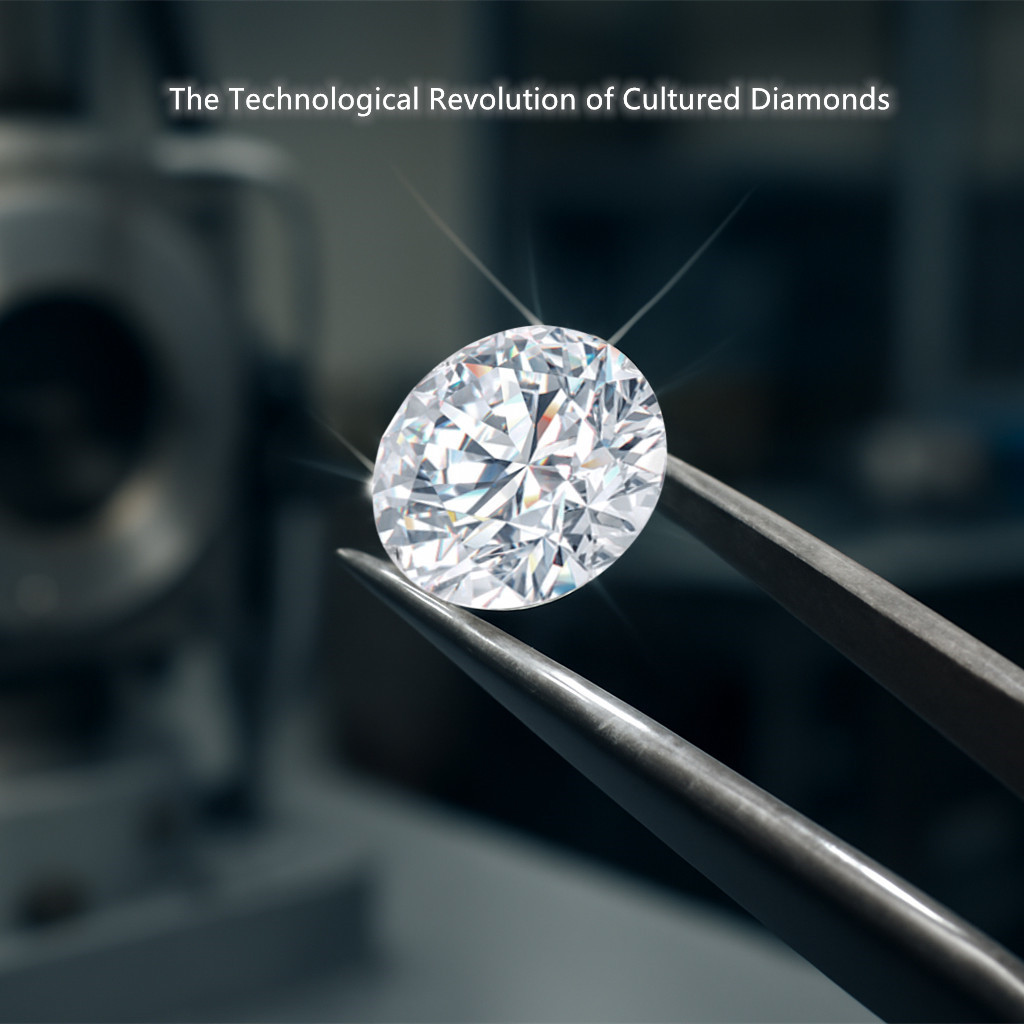
The Technological Revolution of Cultured Diamonds: A Transformation from Lab to Market
Cultured diamonds, once a mere concept confined to the realms of scientific experimentation, have now become an established part of the global market. What was once a niche product for scientific applications has evolved into a multi-billion-dollar industry, driven by advancements in technology, shifting consumer preferences, and growing concerns about the environmental and ethical implications of natural diamond mining.
This article delves into the technological progress of cultured diamonds, exploring the journey from the laboratory to large-scale production, and examines the impact of various techniques, such as Chemical Vapor Deposition (CVD) and High Pressure High Temperature (HPHT), on the quality, price, and market acceptance of cultured diamonds.
The Evolution of Cultured Diamonds: From the Lab to the Market
The Early Days: The Lab Experiment
Cultured diamonds, also known as synthetic diamonds, were first synthesized in laboratories in the mid-20th century. The initial foray into creating diamonds outside of the Earth’s natural geological processes was a monumental scientific achievement, but these early diamonds were more of a scientific curiosity than a commercial product. They were primarily created for industrial applications, such as cutting tools and abrasives, where their hardness made them incredibly valuable.
The first successful creation of diamonds in the laboratory was achieved using the High Pressure High Temperature (HPHT) method. This process mimics the extreme conditions found deep within the Earth’s mantle, where natural diamonds are formed. In this method, carbon is subjected to extremely high pressures and temperatures, causing it to crystallize into diamond structures. However, the quality of these early diamonds was often inconsistent, and their use was primarily limited to industrial rather than decorative purposes.
Breakthrough Technologies: CVD and HPHT
In the 1980s, a significant breakthrough occurred with the development of the Chemical Vapor Deposition (CVD) method, which would later revolutionize the production of cultured diamonds. Unlike the HPHT method, which replicates natural conditions, CVD uses a chemical process to grow diamonds from a carbon-rich gas, typically methane. This method allows for greater control over the growth process, resulting in diamonds of higher purity and better quality.
CVD diamonds are created by introducing a mixture of gases into a vacuum chamber and heating them to high temperatures. The gases break down, and the carbon atoms then bond together to form diamond crystals on a substrate. This method offers the advantage of being able to create diamonds at a lower temperature and pressure compared to HPHT, making it more scalable and potentially more cost-effective for large-scale production. Additionally, CVD allows for the creation of larger diamonds with fewer inclusions, which was previously a significant challenge with the HPHT method.
While HPHT diamonds are often used in industrial applications, CVD diamonds quickly gained attention for their potential in the jewelry market. Their superior quality and potential for mass production made them an attractive alternative to natural diamonds. The ability to create diamonds that are chemically identical to natural diamonds but without the environmental and ethical concerns associated with traditional diamond mining was a game-changer for the industry.
The Rise of Mass Production: Cost and Scalability
One of the key factors driving the success of cultured diamonds in the market has been the ability to scale production efficiently and reduce costs. Both HPHT and CVD methods have seen significant advancements over the years, making it possible to produce diamonds that are not only of high quality but also affordable for the average consumer.
The cost of producing cultured diamonds has decreased dramatically in recent years. Initially, the production of these diamonds was expensive due to the complexity of the processes involved and the high energy requirements. However, with improvements in technology and the development of more efficient production methods, the cost of cultured diamonds has decreased significantly, making them more accessible to a broader audience. As a result, cultured diamonds are now seen as a viable alternative to natural diamonds for a wide range of consumers.
In addition, the scalability of both HPHT and CVD methods has allowed producers to meet the growing demand for cultured diamonds. The ability to produce large quantities of diamonds with consistent quality has been essential for the widespread acceptance of cultured diamonds in the market.
Consumer Acceptance and Market Trends
The rise of cultured diamonds has been accompanied by shifting attitudes among consumers, especially as more people become aware of the ethical and environmental issues associated with natural diamond mining. Traditional diamond mining has long been associated with human rights abuses, environmental degradation, and the depletion of natural resources. In contrast, cultured diamonds offer a solution to these problems, as they can be produced with minimal environmental impact and no ethical concerns related to mining practices.
As consumers increasingly prioritize sustainability and ethical considerations in their purchasing decisions, the demand for cultured diamonds has risen. According to industry reports, cultured diamonds are expected to make up a significant portion of the global diamond market in the coming years. This shift is also driven by the fact that cultured diamonds offer a more affordable option compared to natural diamonds, without compromising on quality.

Quality and Price: The Cultured Diamond Advantage
The quality of cultured diamonds has improved significantly, thanks to advancements in both CVD and HPHT techniques. Modern cultured diamonds can be virtually indistinguishable from natural diamonds to the naked eye. They exhibit the same brilliance, clarity, and hardness, making them an attractive option for consumers who want the beauty of diamonds without the premium price tag.
In terms of price, cultured diamonds are typically much more affordable than natural diamonds. While the price of natural diamonds is largely driven by scarcity, the cost of cultured diamonds is influenced more by the cost of production, which has been steadily decreasing due to advances in technology. As a result, cultured diamonds are often priced at a fraction of the cost of their natural counterparts, allowing consumers to purchase larger diamonds or higher-quality stones for the same price.
The technological revolution of cultured diamonds has dramatically changed the landscape of the diamond industry. With the advancements in CVD and HPHT techniques, cultured diamonds have evolved from a niche laboratory product to a mainstream consumer choice. Their affordability, ethical appeal, and comparable quality to natural diamonds have reshaped the way people think about diamonds, and their market acceptance continues to grow. The future of cultured diamonds looks bright, as technological innovations and shifting consumer demands pave the way for an ever-expanding market.











